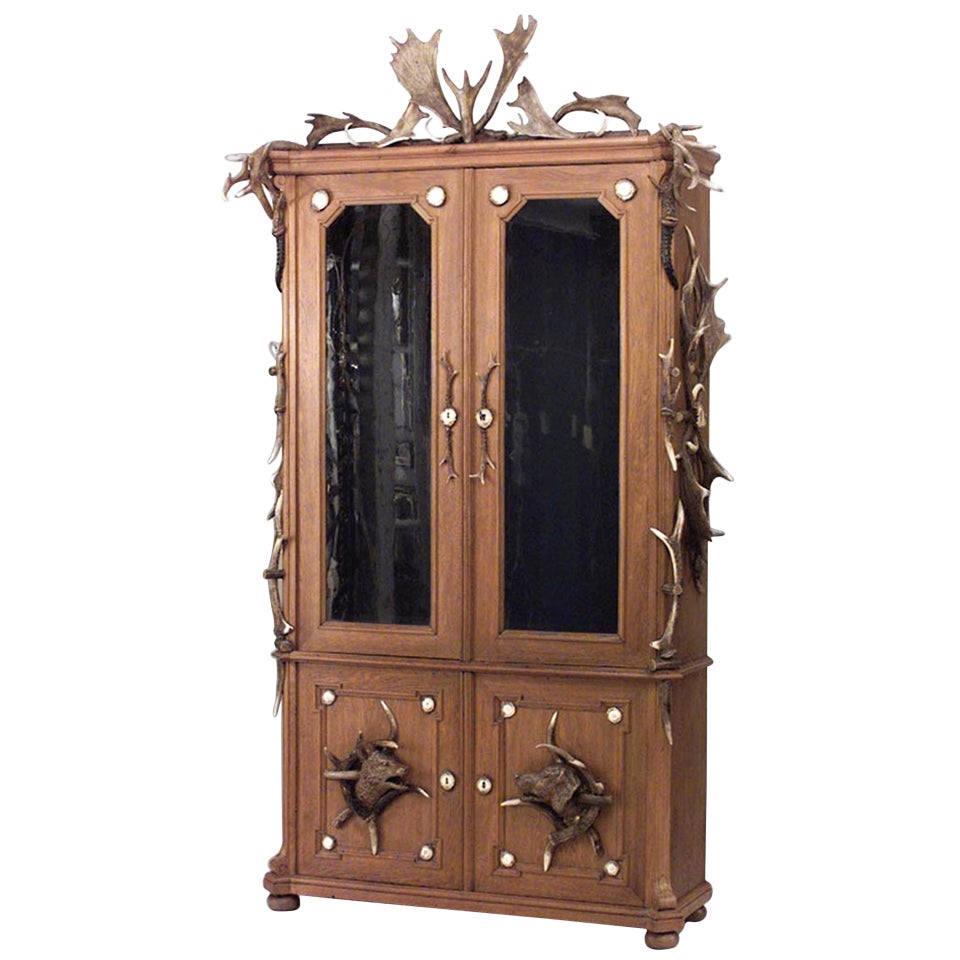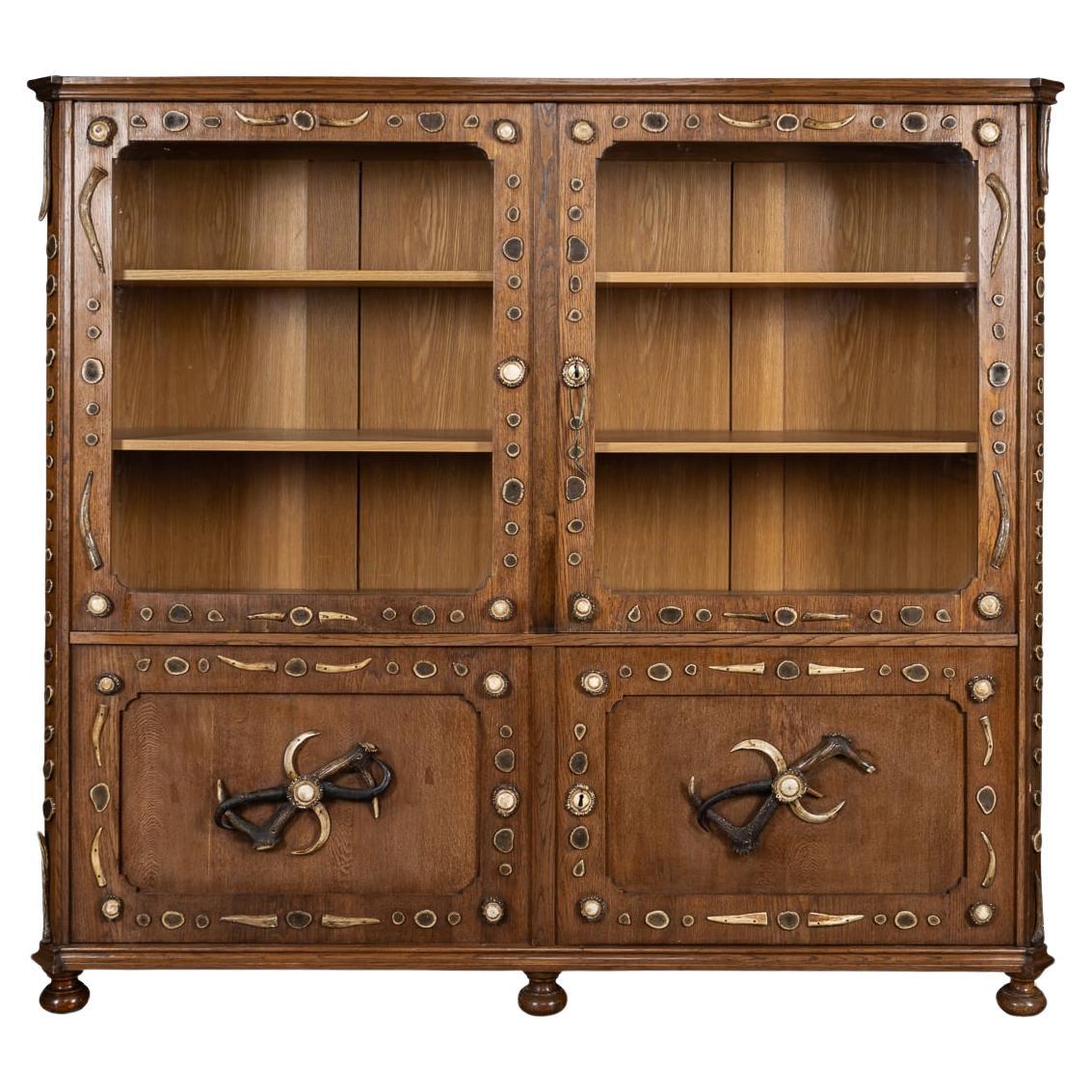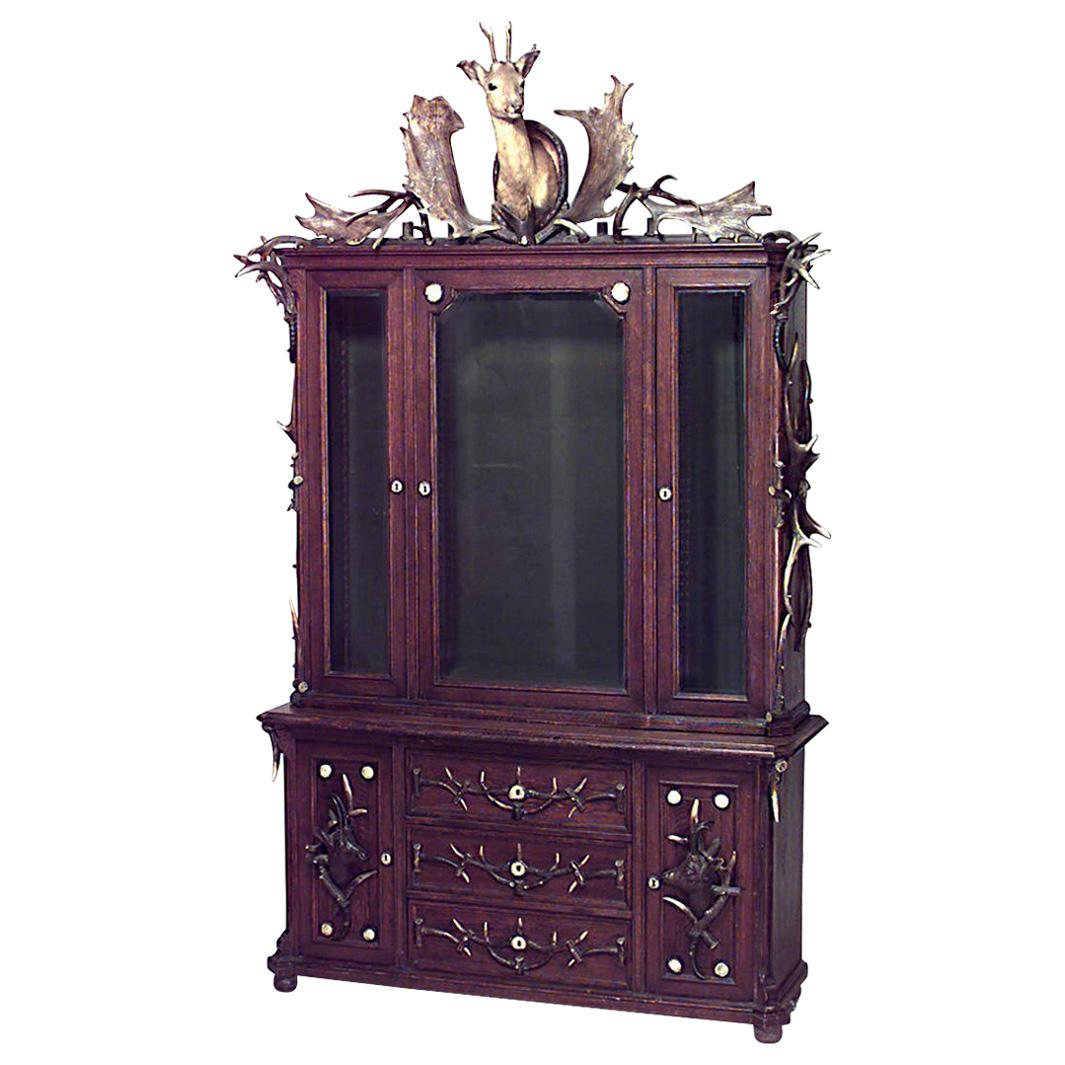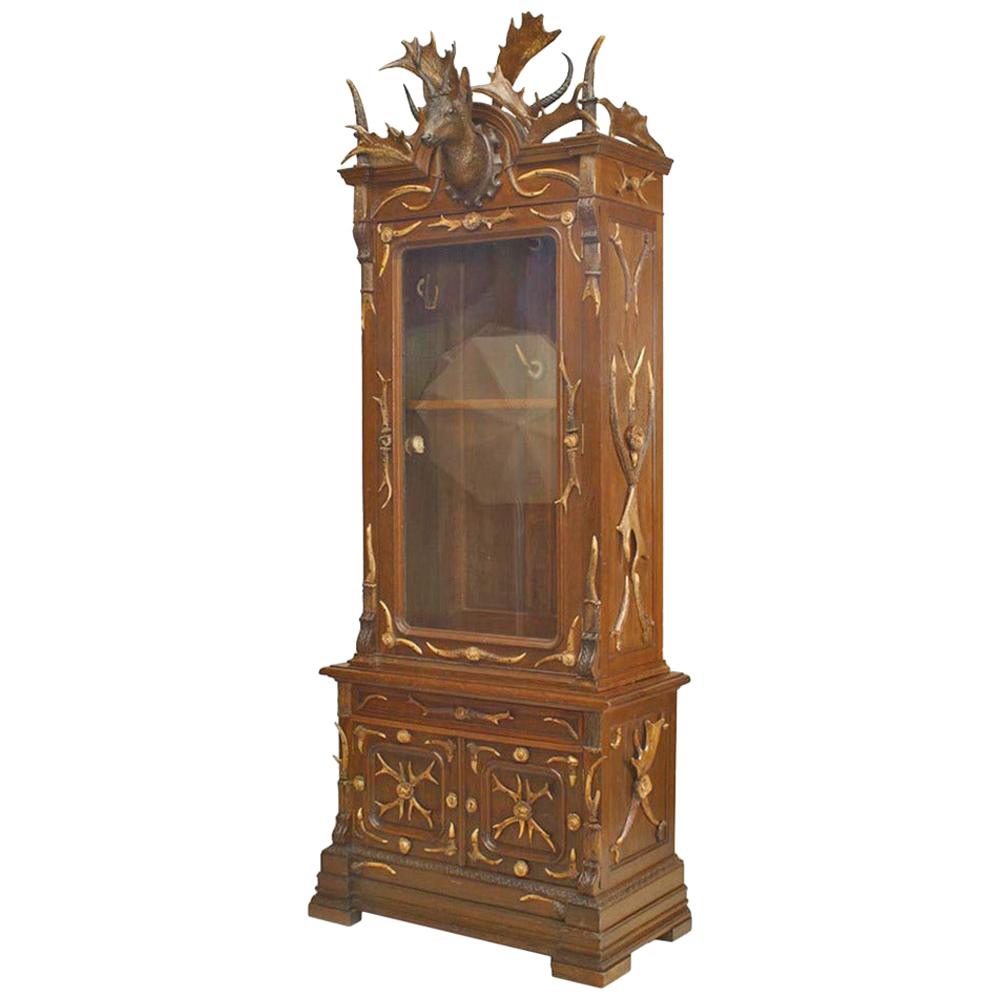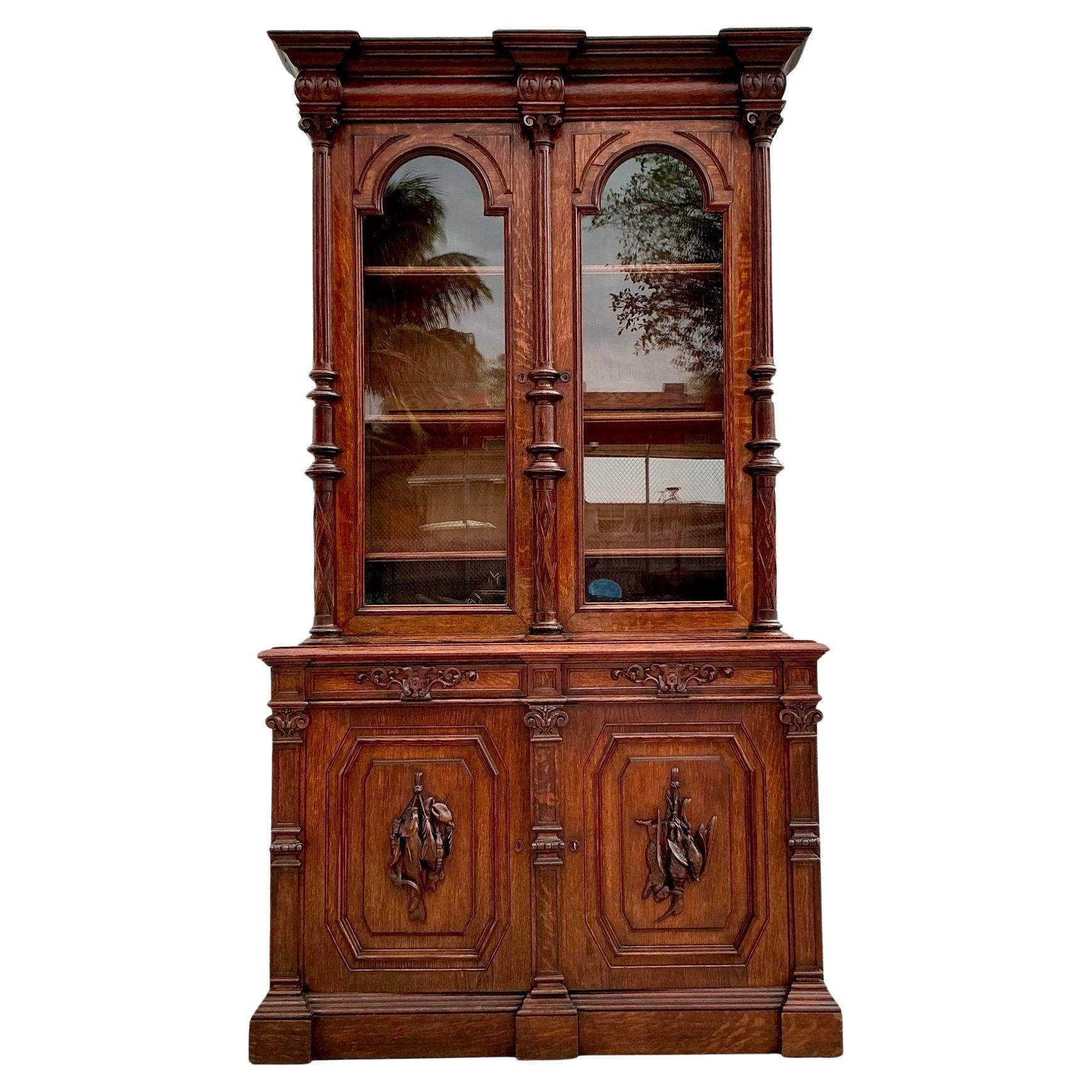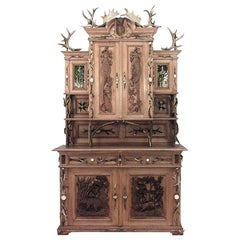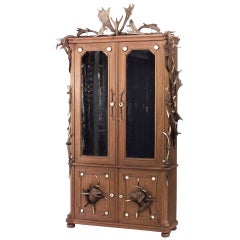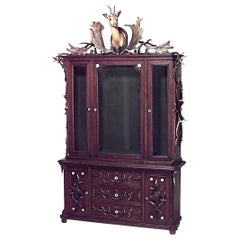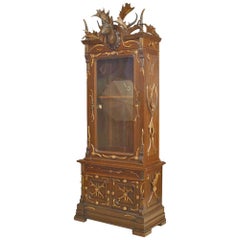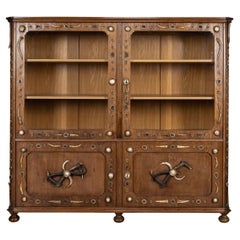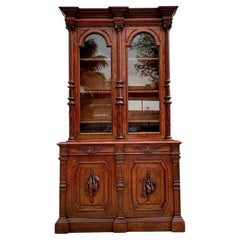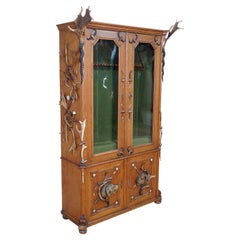Items Similar to Rustic German Oak & Horn Cabinet
Want more images or videos?
Request additional images or videos from the seller
1 of 10
Rustic German Oak & Horn Cabinet
$67,000
£50,595.72
€57,927.44
CA$94,621.51
A$103,304.04
CHF 54,158.08
MX$1,254,667.39
NOK 676,346.29
SEK 638,651.24
DKK 432,366.68
About the Item
Rustic German (19th Century) oak cabinet with horn trim & carved medallions with flip seat bench base and upper section with 2 large stained glass doors and 2 smaller doors.
- Dimensions:Height: 105 in (266.7 cm)Width: 45 in (114.3 cm)Depth: 30 in (76.2 cm)
- Style:Black Forest (Of the Period)
- Materials and Techniques:
- Place of Origin:
- Period:
- Date of Manufacture:19th Century
- Condition:Wear consistent with age and use.
- Seller Location:Queens, NY
- Reference Number:Seller: 0593441stDibs: LU9779827453
About the Seller
4.9
Recognized Seller
These prestigious sellers are industry leaders and represent the highest echelon for item quality and design.
Platinum Seller
Premium sellers with a 4.7+ rating and 24-hour response times
Established in 1939
1stDibs seller since 2013
1,008 sales on 1stDibs
Typical response time: <1 hour
- ShippingRetrieving quote...Shipping from: Long Island City, NY
- Return Policy
Authenticity Guarantee
In the unlikely event there’s an issue with an item’s authenticity, contact us within 1 year for a full refund. DetailsMoney-Back Guarantee
If your item is not as described, is damaged in transit, or does not arrive, contact us within 7 days for a full refund. Details24-Hour Cancellation
You have a 24-hour grace period in which to reconsider your purchase, with no questions asked.Vetted Professional Sellers
Our world-class sellers must adhere to strict standards for service and quality, maintaining the integrity of our listings.Price-Match Guarantee
If you find that a seller listed the same item for a lower price elsewhere, we’ll match it.Trusted Global Delivery
Our best-in-class carrier network provides specialized shipping options worldwide, including custom delivery.More From This Seller
View AllRustic German Oak & Horn Hutch Cabinet
Located in Queens, NY
Rustic German (19th Century) oak hutch cabinet with horn trim and upper section with 2 doors with carved birds & 2 small doors with leaded glass and ...
Category
Antique 19th Century German Rustic Cupboards
Materials
Oak, Horn, Glass
Rustic Continental Oak and Horn Bookcase
Located in Queens, NY
Rustic Continental German (19th Century) oak and horn trimmed 4 door bookcase cabinet with small interior drawers and antler pediment with carved dogs ...
Category
Antique 19th Century German Rustic Bookcases
Materials
Oak, Horn
19th Century Continental Rustic German Horn and Oak Bookcase
Located in Queens, NY
Continental German (19th Century) horn and oak bookcase cabinet with deer head carved doors and pediment.
Category
Antique 19th Century German Rustic Bookcases
Materials
Horn, Animal Skin, Oak
Continental Horn and Oak Gun Cabinet
Located in Queens, NY
Continental German (19th Century) horn and oak gun cabinet with deer carved pediment.
Category
Antique 19th Century German Rustic Cabinets
Materials
Oak, Horn, Glass
Swedish Carl Westman Arts & Crafts Oak Cabinet
Located in Queens, NY
Swedish Arts & Crafts (circa 1915) oak 4 door cabinet with carved floral design finials & trim and decorative metal hardware (by designer and architect Carl Westman).
Category
20th Century Swedish Arts and Crafts Cabinets
Materials
Metal
Rustic Black Forest Walnut Carved Animal Head Armoire
Located in Queens, NY
Rustic Black Forest (19th Century) walnut 3 section armoire cabinet with carved triple animal head pediment and oval mirror in center door with 3 dra...
Category
Antique 19th Century Rustic Wardrobes and Armoires
Materials
Glass, Walnut
You May Also Like
Antique 20th Century German Black Forest Oak & Antler Cabinet c.1900
Located in Royal Tunbridge Wells, Kent
Antique early 20th Century German Black Forest oak cabinet, adorned with stag antlers and fallow deer throughout. The upper section features two wide glass doors that open to reveal ...
Category
20th Century German Other Cabinets
Materials
Antler, Wood
Vintage Boho Black Forest Monumental Carved Cabinet
Located in West Palm Beach, FL
This exquisite Black Forest cabinet is a masterpiece of craftsmanship, featuring richly detailed hand-carved wood panels and stately architectural elements. The grand scale and impre...
Category
Early 20th Century American Black Forest Cabinets
Materials
Glass, Wood
$7,160 Sale Price
20% Off
Large Black Forest Antler Gun Cabinet, ca. 1900
Located in Berghuelen, DE
A large antique oak wood gun cabinet decorated with several original antlers from the deer, the fallow deer, antelope and chamois. Elaborately manufactured...
Category
Antique 19th Century Austrian Black Forest Cabinets
Materials
Antler, Wood
German Oak Danziger Cabinet, circa 1900
Located in Evergreen, CO
On offer is a large oak wall unit from Danzig Germany. Two large side doors open to reveal four adjustable shelves each. More storage in the upper cabinet surround, with three glass ...
Category
Early 20th Century German Cabinets
Materials
Glass, Oak
Antique German Cabinet on Stand in Walnut
Located in Fredericksburg, TX
Antique German cabinet on stand in walnut veneer with plumwood inlays. Straight, single-drawer frame on strongly curved scrolled legs. Above, a...
Category
Antique 18th Century German Cabinets
Materials
Walnut
Oak Cabinet in the Rococo Revival Style from the Early 20th Century
Located in Opole, PL
Oak Cabinet in the Rococo Revival Style from the Early 20th Century
This oak cabinet, dating back to Q1 of the 20th century, is made entirely of solid oak wood. The piece consists o...
Category
Early 20th Century Dutch Rococo Revival Cabinets
Materials
Oak
$2,214 Sale Price
20% Off
More Ways To Browse
German Kitchen Furniture
Used German Kitchens
Antique Horn Furniture
19th Century Horn
Antique Carved Horn
Antique Glass Horn
Black Forest Horn
German Stained Glass
Medallion Bench
Cabinets With Mirrors 1920
Cuban Mahogany Cabinet
Danish Hardware
Faux Book Cabinet
French Tambour
Grill Cabinet
Italian Tv Stand
Midcentury Teak Display Cabinet
Mjolby Intarsia

